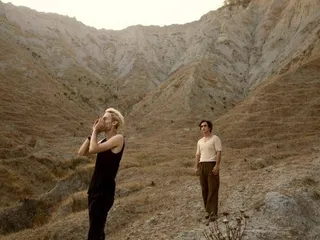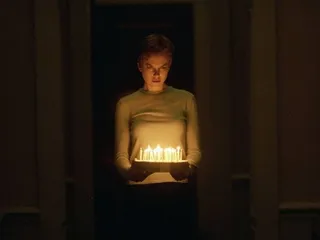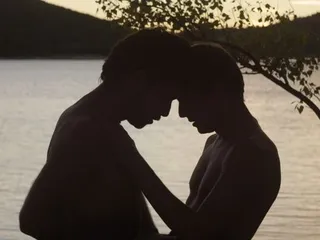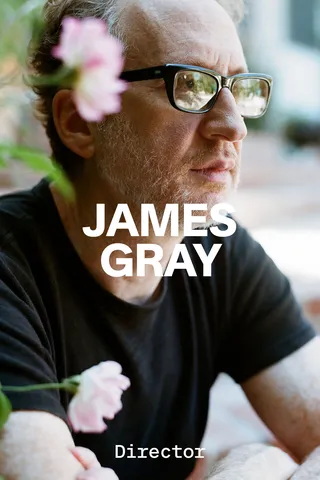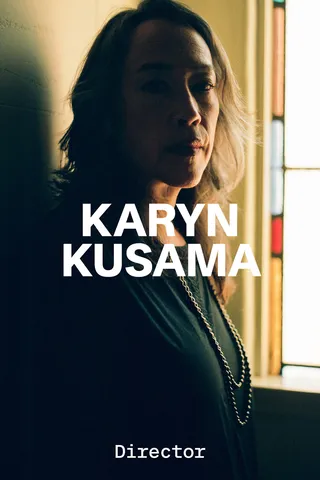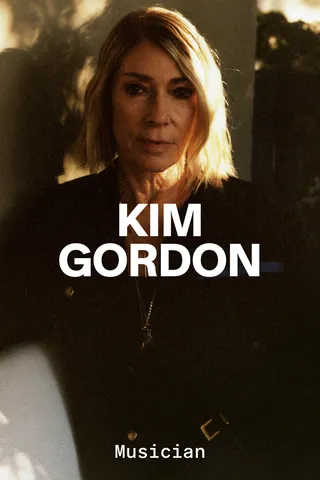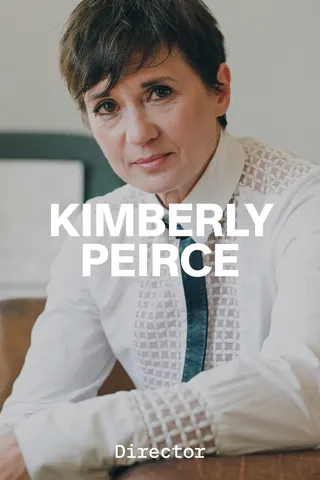Ari Wegner
Cinematographer Ari Wegner approaches each project with a combination of intuition and methodology. Initial conversations with a director and first instincts about a script soon give way to meticulous preparation and analysis: How is a character introduced? When do we first see a location? Whose perspective is guiding a scene? Laced with nuance and detail, the Melbourne native’s emotionally resonant, versatile naturalism has elevated William Oldroyd’s Lady Macbeth (2016), Janicza Bravo’s Zola (2020), Jane Campion’s The Power of the Dog (2021)—which earned her an Oscar nomination in 2022—and Sebastián Lelio’s The Wonder (2022). For Galerie, Wegner has curated a collection of international titles united by a common subtlety and intelligence that artfully locate universal truths within specific circumstances. As a professional observer, Wegner minds the details—first and last shots, repetitions, gesture, light, color—with selections that respect the viewer, delight the eye and ignite the mind.
A PERSONAL MESSAGE
my Film List
Click each title to discover our curator’s notes and where to watch
A condemned man, a cell, a will to escape—Bresson’s film is a master class in unadorned filmmaking. A Man Escaped takes its audience on a tense journey using the bare bones of cinema language: the most basic of shots and a matter-of-fact voice-over. There is nothing superfluous in this film—every shot is essential—and that, for me, is simply a joy to watch. It’s a benchmark in the craft of cinema and a reminder that with a robust story and the camera in the right place, it is possible that nothing extra is necessary.
{{ All Items }}I truly don’t know where to start with this film.… I could write a whole essay. From the iconic opening sequence of a man wordlessly traversing the desert, the imagery doesn’t let up. The American landscape, both remote and urban, is captured in vivid colors by legendary cinematographer Robby Müller. His interiors are equally radiant, and the intertwined reflections of Nastassja Kinski and Harry Dean Stanton make for one of my all-time favorite frames in cinema.
The script is flawless, with moments of vulnerability and humor always anchored in naturalism. Ry Cooder’s lonesome guitar score comes in at the ideal moments. Wim Wenders’s cast is pitch-perfect in every scene—but it’s the perfectly crafted 20 minutes of dialogue between Jane and Travis that will finally break your heart.
{{ All Items }}I came to the Dardenne brothers’ work, like many people I’m sure, at film school. The Son, The Promise, The Child—all had an astounding effect on me. But Rosetta is the film that stands out.
Like most of their films, the camera moves akin to a documentary—the lively handheld camera closely following its subjects, with long takes giving the feeling of a character’s life in real time. While this style appears spontaneous, I was astounded to learn, years later, that this dance between actor and camera is in fact tightly rehearsed over weeks on location. This intimate relationship between actor and camera in turn creates a tight emotional bond between Rosetta and the viewer. The casting is also impeccable, pairing non-actors with trained professionals to create a world that you never doubt existed before the start of the film.
In the first scene, Rosetta loses her job, and the film spirals from there. She tries to make ends meet, take care of her alcoholic mother and find a new job, and these everyday decisions are given huge gravitas in the context of the story. Filming most of the action in close-up, the Dardennes never lose sight of their characters’ humanity or the possibility of their salvation.
{{ All Items }}A truly unique film that defies almost everything we are supposed to know about what makes a film engaging to watch. Two great actors, lost in a landscape—they walk, they talk, and Van Sant drops you into an almost meditation as the characters’ predicament becomes more and more dire. Shot by the wonderful Harris Savides, Gerry has a glorious alchemy of discipline and freedom. Improvised (or maybe seemingly improvised?) dialogue, alongside incredibly deliberate minimalist photography—I just love it.
(If you enjoy the film and you’re a camera geek like me, then check out a making-of on YouTube to see one of the most epic dolly tracks I’ve ever seen built. So much work and planning. So beautiful.)
{{ All Items }}I find Haneke to be a master of human psychology—as it relates to his characters and his audience. Like in many of his films, Time of the Wolf examines class dynamics, family dynamics and the choices we make when put under pressure. Both matter-of-fact and deeply moving, the film confronts the leveling nature of an unnamed cataclysmic event as a family joins a larger group waiting to be rescued by a train that may or may not come. The story construction is masterful, the power of the film coming not just from within scenes but also from the cuts between them. With the situation tense, the imagined world is equal parts brutality and kindness, in striking images of beauty and shock. For me, the last shot of a film holds extra weight, and this one is perfection.
{{ All Items }}If I were ever pressed to name my favorite film, I would have to say Jonathan Glazer’s Birth. Whenever I put it on to watch one scene, I find myself helpless to stop watching the whole film. Glazer takes the audience on a tense, haunting journey, oscillating between confidence and doubt in the protagonist’s belief. It’s everything I admire in filmmaking and everything I enjoy as a viewer.
The first five minutes alone are perfect: Script, shot choices, editing, score, performance, all envelop you to feel instantly in safe hands as a viewer. Very economically and elegantly, we are given a backstory, a present situation and a hint of what is to come. Cinematographer Harris Savides holds a very special place in my heart, and his photography on this film in particular is sublime. The film includes one of my favorite shots of all time, a three-minute track and zoom into a very nuanced performance by Nicole Kidman. It is almost impossible to do this film justice in words. If you haven’t seen it already, please do.
{{ All Items }}Truth be told, I ended up watching this by accident. I was at a film festival and planned to see something else, but it was sold out so I bought a ticket to Our Daily Bread as a way to pass the time before having dinner with friends. I had no expectations. And yet I was spellbound. I spent the next hour and a half riveted and in awe of the images of this film. With zero voice-over or factual context and mostly long takes, this film is as powerful as they come—moments of revelation, meditation and even unexpected humor. The daily processes of how our food arrives to us are laid bare in this documentary, and I walked out of the cinema seeing the world completely differently. Honestly, it’s a film I still think about most days.
{{ All Items }}Feature debuts rarely come as bold and tender as Lance Hammer’s Ballast. With a roving, handheld camera and flawless natural lighting, the film is also the first feature credit of one of my favorite cinematographers, Lol Crawley (Vox Lux, The Childhood of a Leader).
Set in the Mississippi Delta and featuring flawless performances from a cast of local first-time actors, the film patiently follows three characters—a man, his nephew and his sister-in-law—who are forced into uncomfortable proximity after the death of the person who connected them. Small things happen and change is gradual and nonlinear, and without any musical score or other devices to push the emotion, Hammer and his cast had me feeling every win and loss along the way for these three characters.
Ballast gripped me from the first time I watched it in film school. I feel like there were many films being made around that time that tried to emulate it, but none ever got close to the nuanced story Hammer manages to tell. A true sledgehammer of a film about the hope for reconciliation and the small victories for people juggling the everyday alongside life-changing loss.
{{ All Items }}An unsettling tale of ambiguity by one of my favorite filmmakers, Lucrecia Martel. Vero hits something while driving, knocks her head hard on the steering wheel and then continues on. What follows is a dance between viewer and audience as we slowly come to understand that Vero is not the same person she was before the incident. Things are confusing at first, for both Vero and the viewer: Where is she? Who are these people she is meeting? What are the relationships? Martel’s masterful filmmaking assures us that at some point things will start to make sense.
Usually the feeling of confusion isn’t desirable in a film, but in this case we find ourselves very attached to Vero, experiencing her world as she does, with viewer and protagonist locked together in this secret confusion as she bluffs her way through several days. To say more would give away too much, but Martel manages to touch on subjects of denial, privilege and morality as the threads of Vero’s life are slowly woven back together.
{{ All Items }}I only came to Revanche recently, but it is a film that I’d heard a lot about. What starts off as a love story between a low-level criminal and his new partner soon morphs into a heist film, before changing tack once again into the theme of the title—revenge.
The writing is sublime, linking up a disparate array of characters and then slowly tying them together into complex relationships. The main character, Alex, is also perfectly cast—a mix of bravado, dark humor and brooding intensity make him unpredictable and gripping to watch. This downbeat noir never lets you settle into one way of viewing. Its elliptical structure is hugely satisfying, and the end result is a film that makes complex machinations seem effortless. What could easily have been a melodramatic story defies expectations and leaves you with a very different feeling than when it began.
{{ All Items }}I could put any film by Andrey Zvyagintsev on this list, but for me the purest distillation of his style is present in Elena. Modern issues of class are woven into a morality tale revolving around two families and their financial responsibilities. The film’s beautiful use of symbolic images give a sense of foreboding to the actions of the titular main character, who hopes to save her grandson from enlistment by asking her husband to put up the money for a bribe. The script excels in creating a pressure cooker of a situation for Elena, and we care for her enough that her next actions are both horrifying and understandable. Strangely, that conflicted feeling is one of my favorite experiences to have as a viewer—to simultaneously disagree and understand why.
Each time I watch it, I am also in awe of the control and precision of Mikhail Krichman’s cinematography. Shots designed to develop in perfect harmony with the suspense, the tensest moments playing out in real time, as well as flawlessly naturalistic lighting—the sunlit morning interiors are pitch perfect. Elena is a patient, searing portrayal of a corrupt world, leaving you with a conflicted ending where nobody comes out clean.
{{ All Items }}
Kleber Mendonça Filho is an incredible Brazilian filmmaker whose work I just love. His debut feature, Neighboring Sounds, in particular I could happily watch any day of the week.
I first met Kleber at the Sydney Film Festival when Neighboring Sounds was screening, and his narrative films since, Aquarius and Bacurau, are equally quintessential. I love a film that is so local it becomes universal, and Neighboring Sounds is just that. Set within a few blocks of a neighborhood, actually Kleber’s own, the film’s astute observations of its residents (and the people who work for them) paint a picture of contemporary Recife, with universal themes of fear, security and how deeply the past influences the present.
These interactions make for tension and comedy alike, incredible dialogue as well as fantastic moments that made me jump on first viewing. As the title would suggest, sound is given full pride of place, not just with a wonderful soundtrack but also in the (possibly relatable) way our neighbors’ noises manage to transcend fences, walls and gates. Shot with an unmistakable ’70s flavor (great zooms!), this remarkable film is one of the most assured debuts you could hope to see.
{{ All Items }}Kelly Reichardt is one of my absolute favorite contemporary filmmakers. I adore the elegant minimalism she works in, the characters she chooses to follow, the singular voice that unites her very different films.
In Night Moves Reichardt takes a perhaps familiar Hollywood narrative—three people planning and executing a serious crime—without any of the clichés we know, all while shaping a film with almost unbearable tension. Shot by her longtime collaborator Christopher Blauvelt, Night Moves was also one of the first films that convinced me that the ARRI Alexa digital camera could be a very powerful tool, especially for low-light photography. The film looks incredible, and as the title would suggest, it features plenty of darkness. Perhaps one of my favorite features of Blauvelt’s work here is the very delicate color of the nights, their beautiful warmth showing again that clichés can be rewritten.
{{ All Items }}Using only three locations—a lake, a parking lot and the woods between them—Alain Guiraudie crafts an incredibly tense 100-minute thriller infused with erotic desire and questions of ethical responsibility. It’s elegant, rigorous and nuanced. I love this film and its filmmaking so much.
Claire Mathon, one of my favorite cinematographers, uses pared-down photography to show us the world of this summertime cruising spot for men, their bodies shown with refreshing frankness. And when daytime finally gives way to night, the evening photography is second to none. (For an equally great example of how well Mathon shoots nights, see another of her and Guiraudie’s collaborations, Rester vertical.) Demonstrating the emotional potential of a recurring shot, the filmmakers’ planning is evident and the result is so effective. As a DP, and knowing that conceiving the shots for a film is one of the most difficult things to do, I’m in full admiration whenever I see wonderful coverage. Just a fantastic, sun-drenched thriller that will leave you thinking about it long after its end.
{{ All Items }}I first saw April’s Daughters at the BFI London Film Festival, and it was my first introduction to the work of Michel Franco, who has since become one of my favorite filmmakers. One of the things I love most about his films is the way he handles exposition. It is so satisfying as a viewer to have a hunch about something and then later have your theory proven or disproven, and Franco gives you this experience—sometimes over the course of a shot, sometimes a scene, a sequence or the whole film. The use of camera is also masterful; very rarely is there more than one shot per scene but the progression of the shot and the blocking develop so effortlessly, you almost don’t notice. I just love this deeply uncomfortable, deeply satisfying film.
{{ All Items }}Lazzaro has got to be one of the most endearing and watchable protagonists, almost so innocent that he seems to have come from another realm. The quiet, powerful performance by Adriano Tardiolo sits alongside equally beautiful work from a wonderful ensemble—testament to the directing of Alice Rohrwacher. The crowded group scenes of mostly non-actors feel plucked straight from a documentary, at times so real you almost forget this is fiction.
Set on an Italian tobacco farm, the film’s first half teems with pastoral family life—babies, insects, harvest—captured in 16mm by the wonderful cinematographer Hélène Louvart. But for all its naturalism, the film soon weaves myth, the supernatural and perhaps even time travel into an incredibly moving story of what is gained and lost in the forward march of time.
{{ All Items }}I saw this film at the Melbourne International Film Festival on a whim, and since then it is one I think about so often. I think it’s one of the most perfect examples of naturalism I’ve seen. Following an arsonist who returns from prison to the area he has burned down, the film uses minimal narrative but holds a powerful tension just beneath the surface. The photography is humble and timeless, the landscape beautiful and evocative, and the casting (of non-actors) gives you the impression of being dropped into the daily rhythms of a son and mother tending to their animals and going about their day-to-day lives, albeit under the weight of the son’s past actions. At less than 90 minutes, this docu-realist film is a beautiful example of how little plot is necessary when the other elements are rock-solid.
{{ All Items }}There is so much to love about this film, including the fact that the first three shots alone establish the central tension, the triangle of characters and a protagonist we instantly feel for. That, for me, is just wonderful filmmaking. With an incredible economy of storytelling and coverage, this film manages to imbue every moment with a simmering tension that builds to an unexpected crescendo. Shot in 16mm, the film’s gorgeous atmosphere of winter locations in rural America and powerful sound design make it a modern classic.
When I got to the credits and saw the film had just five (?!) shooting crew, I was so inspired. It’s the kind of filmmaking I think many filmmakers yearn to get back to.
{{ All Items }}
“I wanted to choose films that I’ve seen a few times, that I’m drawn to watch again, films that I would sit down and watch any day of the week.”
MY CREATIVE PROCESS
Exploring craft and influence
Galerie Originals
Ari Wegner The Scene: The Wonder (2022) WATCH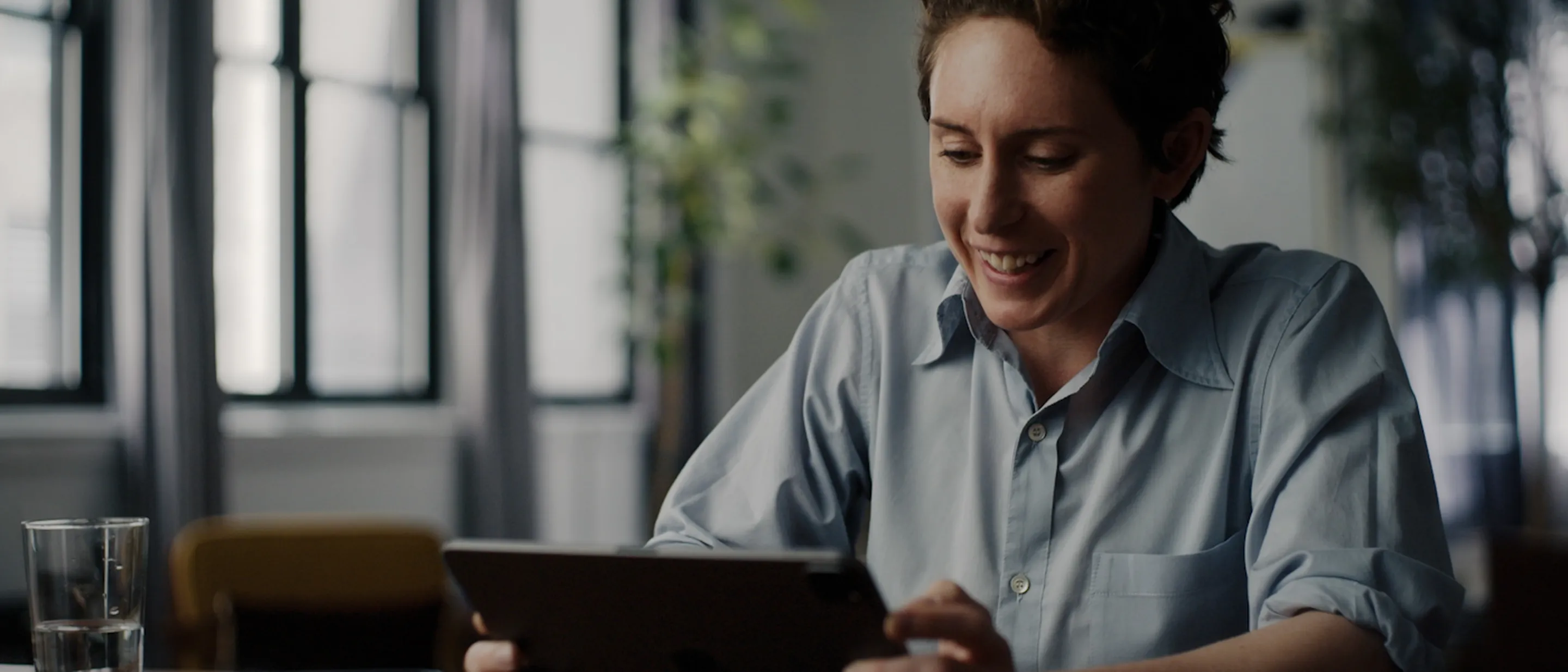
RELATED MATERIAL
Essays, interviews and other connections
![Alice Rohrwacher’s Liminal Cinema]() Alice Rohrwacher’s Liminal Cinemaread
Alice Rohrwacher’s Liminal CinemareadThe filmmaker behind The Wonders and La Chimera on old houses, historical artifacts and Josh O’Connor
By Chiara Barzini
![Born Again]() Born Againread
Born AgainreadThe psychological acuity behind Jonathan Glazer’s polarizing reincarnation drama Birth
By Matt Wolf
![Death Drive]() Death Driveread
Death DrivereadThe homoerotic thriller Stranger by the Lake reflects the contemporary gay male psyche—whether we like to think so or not
By Tim Murphy
